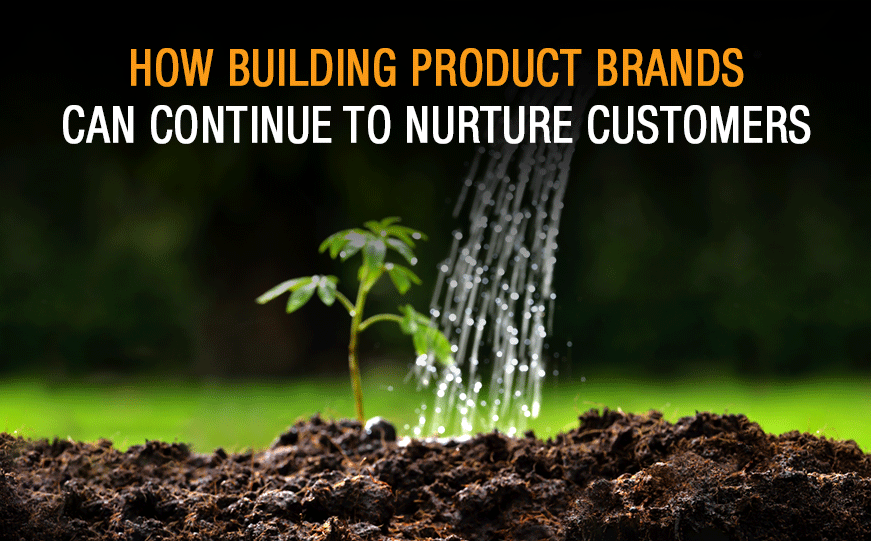While much of last year’s uncertainty seems to be growing into a conviction for our path forward, January’s stock market correction reminds us that there are still some significant bumps in the road ahead.
Disrupted supply chains, delivery delays and inflationary pressures aren’t going anywhere anytime soon. Which makes retaining and nurturing existing customers… more important than ever.
Turning first-time buyers into repeat customers is an actionable — make that, necessary — goal for well-aligned sales and marketing teams. With diligence, a mission plan and a dedicated retention strategy, loyal customer bases will reward those efforts in the form of recurring revenue to the bottom line.
A Commonsense Approach
Conventional wisdom — backed by significant research – continues to remind us that acquiring a new customer… is some five to 25 times more expensive than retaining an existing one.
And, according to the work from Marketing Metrics, the probability of extending an existing customer is greater than 60 percent. While the likelihood of converting a new prospect, may be as low as 5 to 20 percent.
It’s clear, that when you keep current clients satisfied… less time, money and effort will be required for soliciting prove-it-to-me “suspects.”
And that can translate to a significant increase in profits. Notably, research by Bain & Company demonstrates that growing customer retention rates — by as little as 5 percent — can increase profits by some 25 to 95 percent. That’s significant ROI!
Will They Stay or Will They Go?
As a building product brand, it’s obvious that keeping existing customers is valuable — not only for recurring revenue – but, as well, for the referrals they create to other potential customers.
That’s why maintaining accurate data around customer retention efforts is critical.
One of the key metrics in understanding how a building product brand retains customers is analyzing churn rate. Measuring the percentage of customers who “leave” — or stop buying — during a specific period of time. Some companies prefer to monitor and report the opposite metric: retention rate. Which is, of course, how many customers “stay” and continue to make purchases.
Ultimately, whether counting wins — or mourning losses — the analysis is simply two sides of the same coin: how strong is the connection that customers have with a brand.
What matters most is continual monitoring customers’ buying behaviors. And making it a priority to build and nurture loyalty.
Make the Connections
Brand loyalty can be created, enhanced and encouraged. And there are many ways to accomplish that.
Here are eight tips for growing customer loyalty for building product brands.
Offer reliable products and services. If you build quality and dependability — along with maintaining high perceived value — into products and solutions, loyal customers won’t wish to find a reason to go anywhere else. As such, it should be part of every company’s culture to exhibit pride in its offerings and stand behind them. Smart brands know their customers’ needs and expectations… and consistently deliver on both.
Create a solid brand identity. Ensure loyalty efforts are integrated around a strong, unified branded “hug.” Website landing pages, digital content, collateral and media must continue to present a cohesive promise. Remind all customers… why they made the initial wise decision to buy from your company. Regularly check for — and remove — inconsistent and outdated information that won’t defend their decision to remain loyal.
Communicate regularly. It’s vital to stay in touch with customers, keeping communication authentic, honest and clear. Resist the urge to be overly promotional… no need to appear desperate. Or resort to any hard sells. Instead, strive to continually educate existing customers. And help them solve remaining challenges.
Provide product training. Whether it’s through in-person events, a consistently produced video series — or both — make it a point to teach customers how to use your products. Consider sponsoring live instructional demonstrations at trade events. And then share videos from those demos on social media to subscribed audience channels. And via targeted emails to selected databases via CRM platforms.
Develop loyalty programs and discounts. Discover new and unexpected ways to recognize — and intimately reward — loyal customers. Know who the decision makers are behind the purchase… and tailor loyalty programs personally. Leverage customer feedback to make each program even better.
Include customers in testimonials. Customer testimonials not only highlight your brand’s offerings, but also allow your customers to share the spotlight. Shine a halo on solved challenges and their achieved solutions.
Host brand planning roundtable discussions. Invite particularly influential or insightful members among your client roster to participate in roundtable discussions at industry events. Leverage these sessions to energize and engage participants while — at the same time — collecting feedback to continually improve relationships.
Hold a recognition event for key customers at trade shows. When hosting a company dinner or mixer at national and regional trade shows, highlight important customers during a presentation. And let them mingle with your team members. This builds more intimate, human connections… which are integral to long-term brand loyalty.
While building and fostering brand loyalty takes time and diligence, the reward for a building product brand is long-lasting dividends. Let’s talk about unique ways to generate more loyalty together. Drop me a line at steve@kleberandassociates.com.




